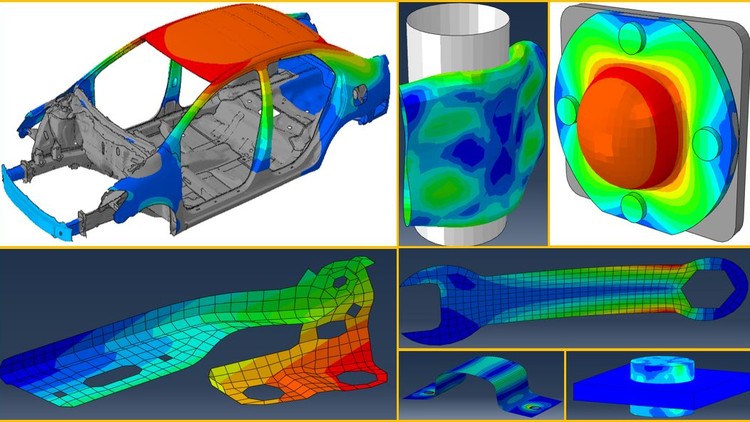Abaqus CAE: A Detailed Introduction to Structural Analysis

Why take this course?
🎓 Course Overall Theme 🚀
Hello Everyone,
I warmly welcome you all to the new course on Abaqus CAE in our Orville Academy's library. This comprehensive course is dedicated to diving deep into the realms of static and dynamic analysis. Designed for both novices and experienced professionals, this course starts with an introduction to the theoretical concepts necessary for the course, ensuring that no matter your starting point, you'll be well-equipped to tackle complex engineering problems using Abaqus.
📚 Course Structure 🛠️
Below is the detailed outline of the various topics covered in the course:
-
Section 1 : Theory of CAE/FEA
- Product Lifecycle Management
- Degree of Freedom and Methods to Solve Engineering Problems
- Intuition of CAE Software's/Tools and Domains of CAE
- Steps in FEA, FEA and Interpolation Function
- Types of Numerical Methods and Elements
- Linear vs Non-Linear Analysis, and Dynamic Analysis Types
-
Section 2 : Introduction to Abaqus
- Installation and Licensing
- Abaqus Workflow and User Interface
-
Section 3 : Modeling Fundamentals in Abaqus
- Part Creation, Assembly, and Mesh Strategies
- Material Types, Properties, and Sections
- Boundary Conditions and Constraints
- Load Application Techniques
-
Section 4 : Static Analysis
- Creating a Basic Static Analysis Model
- Interpreting Results and Optimizing Solutions
-
Section 5 : File Structure and Dictating Abaqus Jobs
- Understanding the Input File (
.dat),.msg,.sta, and Other Essential Files - Output Formats in Abaqus and Post-Processing Techniques
- Understanding the Input File (
-
Section 6 : Buckling Analysis
- Introduction to Buckling Analysis with Real-World Examples
-
Section 7 : Non-Linear Analysis
- Understanding Geometric and Material Non-Linearity
- Controlling Non-Linear Analysis and Case Studies
-
Section 8 : Modal Analysis
- The Importance of Vibration Analysis and Overview of Modal Analysis
- Governing Equations and Rigid Body Modes
- Effective Mass Calculation and Mode Participation Factor
-
Section 9 : Damping
- Theory of Damping and Practical Applications
-
Section 10 : Harmonic Analysis
- Understanding the Theory of Harmonic Analysis with Practical Examples
-
Section 11: Explicit Analysis
- Implicit vs Explicit Methods/Schemes/Analysis and Concept of Timestep
Throughout this course, you'll work on hands-on projects that apply the theory to real-world scenarios. You'll learn best practices for meshing, material modeling, boundary condition application, and much more. Each section includes practical examples and case studies to solidify your understanding of Abaqus CAE and its capabilities.
🌟 Key Takeaways ✨
- A deep dive into static and dynamic analysis using Abaqus CAE.
- Understanding of the theoretical foundations behind finite element analysis (FEA).
- Practical experience with a wide range of applications, from simple beam analysis to complex non-linear problems and vibration studies.
- Skills to interpret results, optimize models, and apply Abaqus effectively in real-world engineering contexts.
By the end of this course, you will not only have a comprehensive understanding of Abaqus CAE but also possess the skills to tackle any static or dynamic analysis challenge your career may present. Whether you're looking to advance your current role or aiming to break into the field of computational engineering, this course is designed to equip you with the knowledge and tools for success.
Join us on this exciting journey into the world of Abaqus CAE, and let's transform theoretical concepts into practical solutions together! 🚀💻🎉
Loading charts...